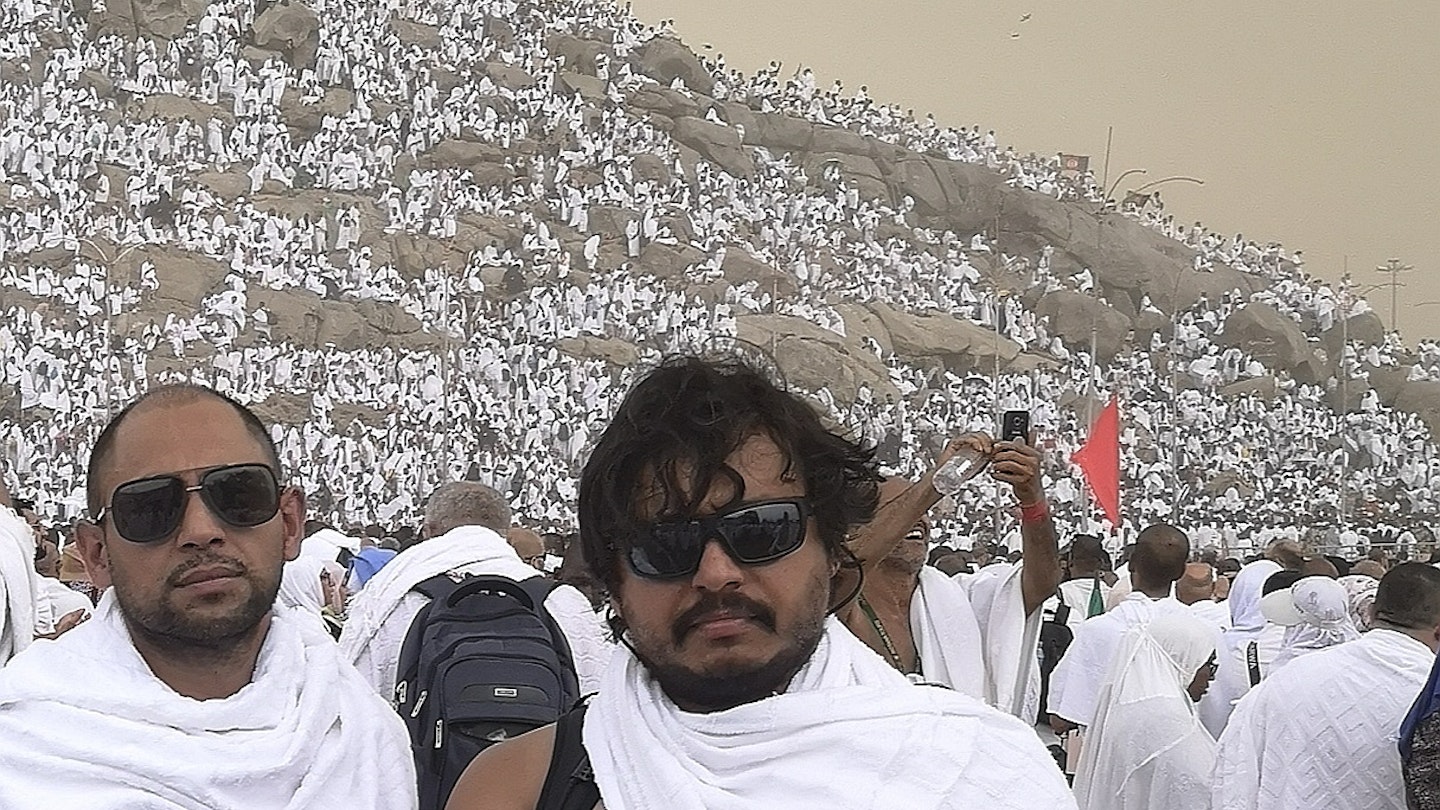Hajj Journey: A Visit to the Mountain of Mercy
The grating ‘scrunch-scrunch’ of a million squashed plastic bottles beneath our sandals made it difficult to focus. I held my mother’s hand tight to stop her from slipping.
Around us, a hundred talbiyahs were being chanted by the Hajjis slowly shuffling towards the focal point of the plain of Arafat, the Mountain of Mercy.

It was late afternoon, and an earlier thunderstorm had cooled the temperature considerably and thinned out the crowds. This had given me the confidence to take my mother to visit the revered mountain.
Arafat is where Adam and Eve had been forgiven by God, and in 632AD, on this very day, it was where the Prophet Muhammad had completed his mission while performing his own Hajj.
During his pilgrimage, the Prophet laid out the essential rite of being in Arafat on the 9th of Dhu’l Hijjah until the setting of the sun – he had said nothing about being at the mountain.
The sheer volume of pilgrims attempting to visit the mountain earlier was the reason Raf and I had left our mothers praying in their tent. With two fellow Hajjis in tow, we joined the mass of pilgrims, moving glacier-like towards Jebel Ar Rahma. Using umbrellas to shield ourselves from the midday sun, few noticed the dark, foreboding clouds gathering in the distance.
By the time the granite face of the mountain came into view – awash with the white ihram of pilgrims atop it – a large crack overhead was followed by a strong wind sweeping through the valley, turning our umbrellas inside out and exposing us to the imminent downpour.
The unexpected opening of the heavens on the most auspicious day of the Hajj aroused joyous shouts of ‘Allahu Akbar’ – God is great – all around us; the Hajjis saw it as a sign of God’s bounty. According to tradition, rain in the desert is regarded as a miracle, laden with blessings.
Up ahead, the thick crowd near the foot of the stairwell leading up the mountain began to come to a standstill. The soldiers charged with managing the flow reacted quickly by diverting Hajjis – us included – away from the mountain.

This frustrated some pilgrims who scrambled up the slippery, jagged rock face; having patiently shuffled for the last hour to reach the mountain, they were not about to be denied. Observing the situation, we witnessed another miracle as no one slipped and suffered serious injury.
Eventually, we also broke away to find a spot near the mount.
The four of us stood, eyes closed, arms outstretched, facing Makkah; lost in our individual supplications, blissfully unaware of everything around us.
The rain streamed down our faces, mixing with salty tears; I focused on the individual requests people had asked me to remember. As I named each person slowly and deliberately in my mind, the voices outside began to fade to a whisper. By the time I turned to my personal supplications, I could hear nothing except my own pleadings.
It was a powerful moment. The moment we had come to the Hajj for.
Now, at a turn in the road where Bangladeshi migrant workers in green boiler suits held out plastic bin bags, I tried to recall the names I had missed earlier. My mother handed me a few Saudi riyal notes, and I discreetly placed them in the top pockets of the workers as we passed. They smiled and nodded in acknowledgment.

At the foot of the mount, I guided my mother to a space beside a group of Arab women, one of whom wore a traditional, thin, metal face mask. Above us, the mount was still awash with the white of men’s ihrams, but now the atmosphere changed. People sensed that time was running out. Soon the sun would set on this sacred window, during which it is believed that any request made by a Hajji standing on the plain is granted. A wave of whispered prayers cascaded down the rockface.
My mother and I spent the next 30 minutes making sure we maximized our opportunity. While she made supplications for a Hajj dedicated to her father, I did my best to recall the requests I had forgotten initially.
As we made our way back to our tent, she pointed out the trees lining the route.
“You see those? They’re called ‘Zia’ trees,” she said. “They’re named after former Bangladesh president Ziaur Rahman. When he came for Hajj, he saw how scorched the plain was and told the King of Saudi that the Neem tree of Bangladesh provided excellent shade. He promised to send saplings to be planted here to provide shade for future Hajjis. In return, the Saudi King agreed to accept more Bangladeshi workers into his kingdom.”
I wasn’t sure about the validity of the story, but I listened with a smile. There aren’t many tales about Bangladeshi workers in Saudi Arabia that evoke happiness, so I was glad to hear this one.
General Ziaur Rahman was the second President of Bangladesh and the figure who declared the country’s independence on March 27, 1971, through a radio announcement. My mother would have been an 18-year-old bride with a one-year-old babe in her arms. The previous day, the War of Independence had begun, which would see almost 3 million Bangladeshis killed.

That evening, I stood atop a large rock overlooking the plain of Muzdalifah, our third destination for the day. Before me, a vast ocean of sleeping bodies stretched out as far as the eye could see. It was an awe-inspiring sight, unlike anything I had ever witnessed before.
Somehow, before the day concluded, the Hajj authorities successfully gathered all 2.5 million of us to this narrow stretch of desert for our third rite of the pilgrimage. Now we were to pray, collect pebbles for the stoning ritual tomorrow, and bed down, out in the open with nothing between us and the starry desert sky.





